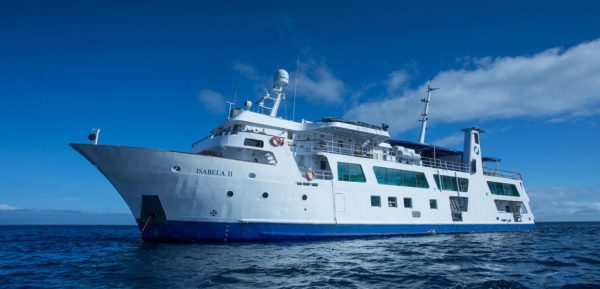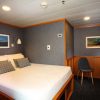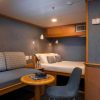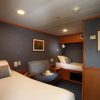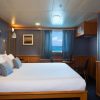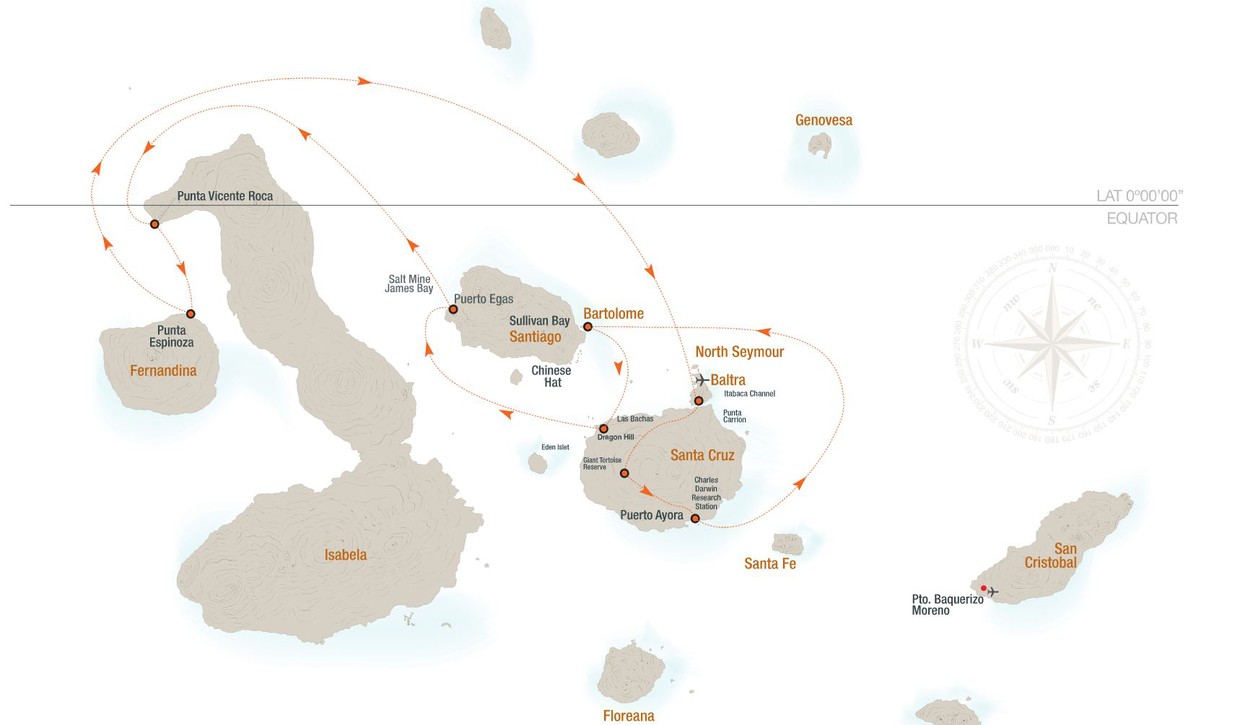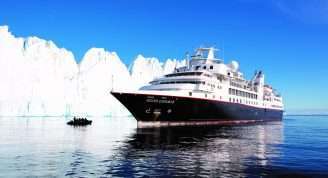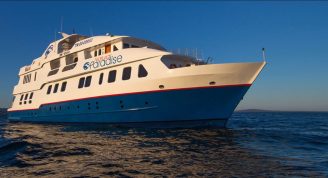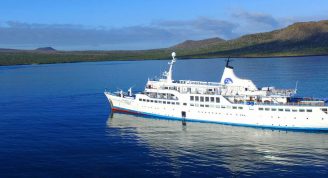Description
Our journey begins on Santa Cruz Island as we explore the lush vegetation of its highlands before venturing down to the world-famous Charles Darwin Research Station. The next day, we’ll enjoy the panoramic views from Bartolome Island before exploring the white coral sand beach of Sullivan Bay, venturing through its dramatic lava field. The next morning takes us to Dragon Hill, home of dusty-yellow land iguanas! After this adventure, we head out to discover Punta Vicente Roca’s wildlife. Later, we’ll make our way to the youngest island in the archipelago, Fernandina, widely regarded as one of the most pristine environments on the planet.
Trip Name
Western Galápagos (Isabella II)
Days
5
Overview
Vessel Type: Yacht
Length: 55.9 meters
Passenger Capacity: 40 guests
Built: 1979 / 2000 / 2014 / 2018
Yacht Isabela II offers the perfect, intimate space for exploring Darwin’s islands in comfort. Traditionalists will enjoy feeling at home with a crew that has remained almost unchanged for years, leading to seamless attention to detail that will make your stay extra special.
With just 20 guest cabins, the yacht’s convivial atmosphere leads to a close-up experience of this unique world. On board, guests find delicious cuisine, faultless service and excellent facilities, including a Hut Tub, fitness room, bar and outside deck for al fresco meals, drinks, and sunbathing.
Your groups can expect top facilities and equipment, delicious meals, and safe and stimulating expert-planned expeditions on the islands. Scout the island sites for Big 15 wildlife in groups that average no more than 11-14 guests per naturalist guide which surpass the National Park standard, which permits up to 16 guests per guide. Explore the coast with your guides on our pangas, glass-bottom boat or kayaks, or get wet and snorkel.
In 2018 Isabela II has undergone a 360-degree renovation. Our social areas have had some major changes. In our guest hallways, windows have been replaced and an aesthetic makeover will have our guests making their way about in a warm and modern atmosphere. Our library, which has also been beautified, has been enriched with new literature on natural history. Cabins have received an extreme makeover to provide greater comfort for our guests. In addition, we have listened to our explorers and acquired new expedition gadgets to make their trip a more enriching adventure.
Ship’s features and services:
* Bar – Lounge
* Boutique/Gift Shop
* Reading Room & Natural History Library
* Hot Tub
* Radio, telephone, E-mail, and Fax communications
* PA System
* Air conditioned throughout
* Safety boxes
* Hair dryers
* Multimedia natural history lectures
* Stargazing Programme
* Glass bottom boat
* Sea Kayaks
* Snorkelling Equipment & wet suits
* Digital camera and underwater housing for expedition documenting


